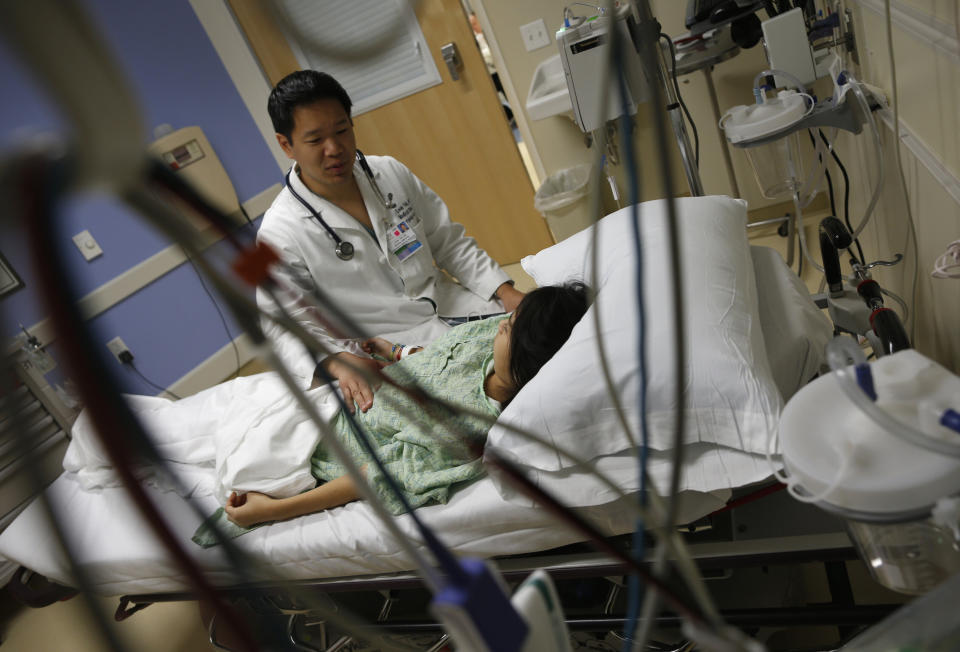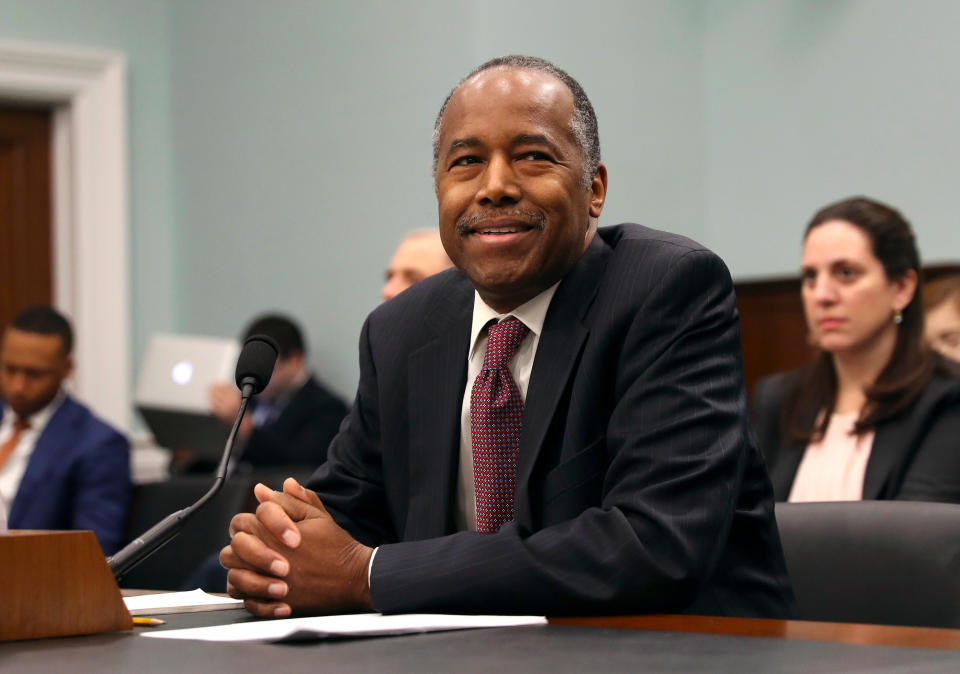'A vicious cycle': High rent is keeping Americans from health care
Two of the biggest issues in the country are affordable housing and high health care costs. And they may be more connected than ever before.
According to a report from Enterprise Community Partners, more than half (54%) of the 1,000 renters surveyed indicated that they have delayed their medical care in order to pay their rent.
“There’s a sort of vicious cycle around increasing health care expenditures as GDP, and the inability to invest or pay for other things that keep us healthy and well,” Brian Rahmer, vice president of Health and Housing at Enterprise Community Partners, told Yahoo Finance. “These issues play off of each other.”

The online survey also heard from 500 medical professionals. And according to the report, every one “reported that at least some of their patients have expressed concerns about affordable housing, with 31% of those professionals reporting that at least one quarter of their patients have expressed concerns about having an affordable place to live.”
The most common types of medical treatment that respondents delayed were preventive routine check-ups (42%), seeking treatment while sick (38%), and getting over-the-counter medicine (35%).
A ‘kind of ripple effect’
Megan Sandel, associate director of the GROW Clinic at Boston Medical Center, described these findings as “a really good framing.”
In regard to housing affordability, “the fact they tied it to financial health and high medical costs, I think is really smart,” she told Yahoo Finance, adding that she wasn’t surprised by the findings. “This kind of ripple effect is more and more what families and individuals are facing.”
And when it comes to the debate about health care coverage, Sandel said, one of the things that is often lost is “the fact that oftentimes, coverage isn’t always enough, [and] that there can be these high deductibles or high co-pays, such that you’re still falling into traps of debt and other things.” She cited reports that 25% of bankruptcies in the U.S. are related to medical debt.
“I do think that we have to talk about it, not just as affordable health coverage,” she added, “but also health coverage that doesn’t force you to choose between rent or [eating].”

Sandel noted an experience she had with a 2-year-old patient in her clinic.
“He hadn’t outgrown his 12-month-old clothes yet,” she said. “We were trying to get him to grow, and nothing was working. We were ordering all these expensive tests, all these nutritional supplements, and nothing was working.”
Sandel continued: “And then all of a sudden, he started growing. What had changed was the family got off an affordable housing waiting list and got their own apartment. The child was able to sleep in his own bed instead of the living room, and have a space at the table where he could actually just eat and not be distracted.”
‘Other countries continue to outshine us’
Over the last five years, the U.S. median rent has risen 11%. As a result, renters earning the national median income have spent 28.2% of their earnings on a rental. According to Zillow, that is significantly “above the 17.7% that median-income households buying a typical home today spend on their monthly mortgage payment.”
A report from the National Low Income Housing Coalition (NLIHC) indicated there is a similar issue with rent — it found that “in only 10% of U.S. counties can a full-time worker earning the average renter’s wage afford a modest two-bedroom rental home at fair market rent, working a standard 40-hour work week. The same worker could afford a modest one-bedroom apartment in 41% of U.S. counties.”

And it doesn’t help that rising health care costs have become a major issue in the country as well. In 2017, U.S. health care spending grew 3.9%, reaching $3.5 trillion or $10,739 per person, according to the Centers for Medicaid and Medicare Services. Those numbers account for about 17.9% of the nation’s GDP.
In an April 2019 Gallup poll, 55% of respondents indicated that they worry “a great deal” about the availability and affordability of health care. And with the legality of the Affordable Care Act being questioned in the courts, these worries are perpetuated.
“Health care costs in the country have been increasing at a rate that’s widely considered as unattainable,” Rahmer said. “We continue to not be able to deliver favorable health outcomes, as other countries continue to outshine us.”
So, Rahmer was “not necessarily surprised” by the survey findings, “as much as further concerned with the nature of how these interdependencies interact in people’s lives.”
“One of the interesting findings that I continue to reflect on — 89% or so of renters we surveyed said they would prioritize paying rent before anything else that month,” Rahmer said. “There’s sort of this notion of Mazlow’s Hierarchy of Needs — a safe place to sleep at night, roof over head. If rent outpaces income growth in the majority of the country, that essentially makes people more poor. There’s essentially less and less to contribute to other aspects of life.”
‘There is an affordable housing crisis in this country’
These are issues rooted in a social context, Rahmer said. At the state level, he said, different sectors like health care and affordable housing need “to work better together, whether that’s being able to incentivize health care systems or insurance payers” or understanding that a lot of these upstreams are siloed.” But, he added, it is a “worthy goal from a policy perspective.”
According to the National Low Income Housing Coalition (NLIHC)’s Out of Reach 2018 report, a full-time worker earning the federal minimum wage of $7.25 “needs to work approximately 122 hours per week for all 52 weeks of the year, or approximately three full-time jobs, to afford a two-bedroom rental home at the national average fair market rent.”

Additionally, in no state “can a worker earning the federal minimum wage or prevailing state minimum wage afford a two-bedroom rental home at fair market rent by working a standard 40-hour week.”
“There is an affordable housing crisis in this country,” Rahmer said. But, he added, “because the issues are complex and the interdependencies are so pronounced, solutions are, in some way, very simple. If lack of affordable housing is the main concern driving the affordability crisis, building more affordable housing is the solution.”
Adriana is an associate editor for Yahoo Finance. Follow her on Twitter @adrianambells.
READ MORE:
What is direct primary care? An alternative form of health care avoids insurance altogether
Health care CEO: Medicare for all 'would just collapse the system'
'A national problem': U.S. housing affordability is out of whack with minimum wage
Read the latest financial and business news from Yahoo Finance
Follow Yahoo Finance on Twitter, Facebook, Instagram, Flipboard, SmartNews, LinkedIn, YouTube, and reddit.
